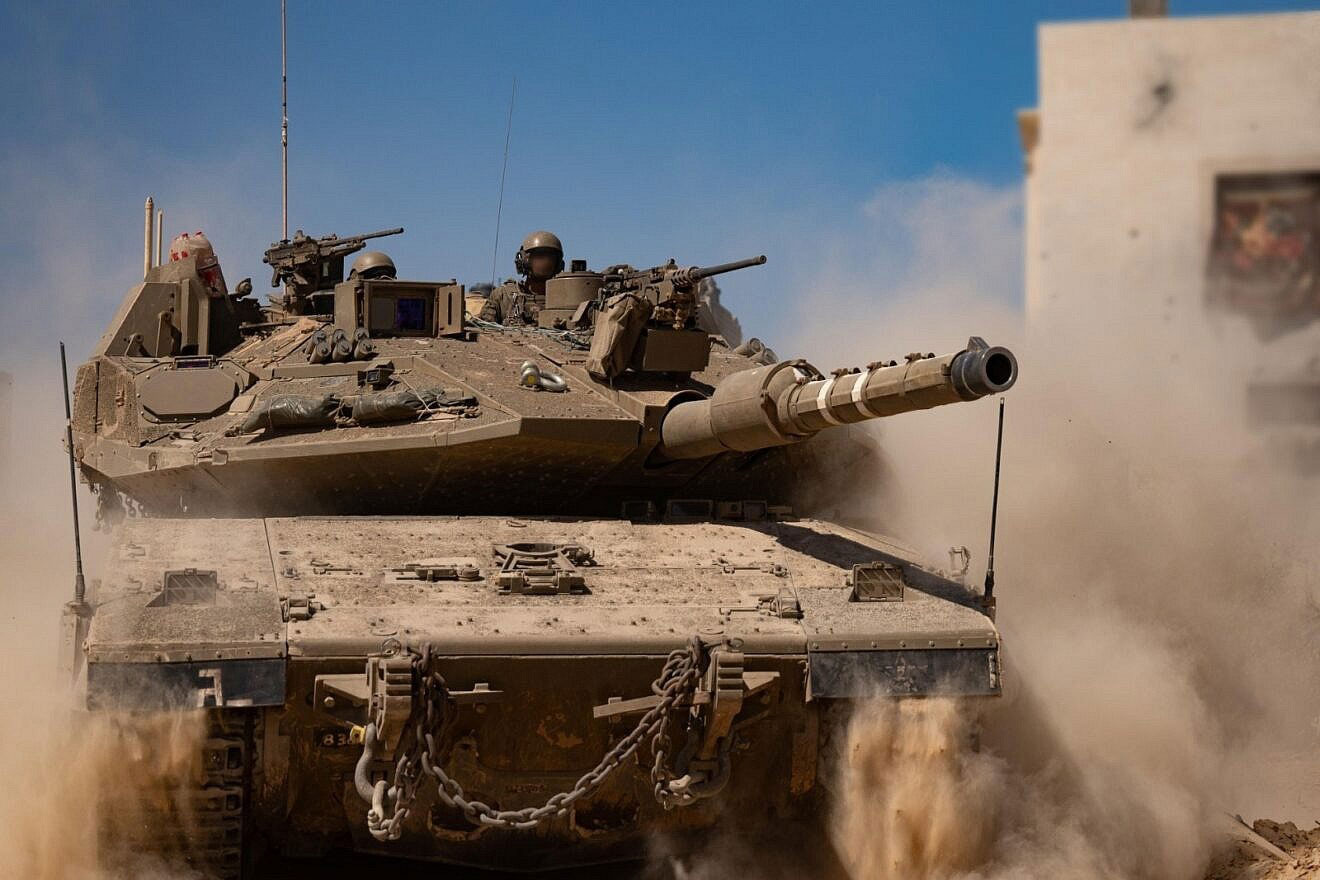(JNS) — By Thursday afternoon, day three of the escalation between Israel and the Palestinian Islamic Jihad terror faction in Gaza, the Iron Dome air-defense system had achieved a 96% interception rate.
The ongoing barrages from PIJ were also an opportunity for operators of the newer David’s Sling intermediate-range air defense system to test its capabilities. The first successful operational use of the system occurred on Monday evening, intercepting a rocket headed for central Israel.
Both systems are made by Israeli company Rafael, which is also developing the Iron Beam laser air-defense system, due to become operational soon.
The carnage that Iron Dome has prevented so far can be seen in the number of projectiles it stopped from hitting cities. Of the 535 rockets fired by PIJ as of midday Thursday, 391 crossed into Israeli airspace. Iron Dome intercepted 138 of them heading for build-up areas. The system is programmed to only hit those projectiles it identifies as aimed at populated regions, not rockets heading into empty open areas.
A further 115 rockets fell in Gaza itself, killing four Gazan civilians, according to IDF data, and 29 fell into the sea. Five rocket impacts occurred in Israeli populated areas.
Some have raised concerns over the financial costs of Iron Dome. Each Tamir interceptor costs an average of $50,000, compared to the estimated $500 to $1,000 per unguided rocket fired by terror organizations, depending on range and size. On the face of it, it looks like the Gazan terrorists have the financial advantage.
This fails to take into consideration the enormous costs that Israel is spared by the air-defense systems: Tens of millions of shekels in property damage, medical care for the injured, lives lost and large-scale disruption to the economy and normal life.
Furthermore, without capable air defenses, Israel would likely have had to launch a rapid ground offensive into Gaza to quash the rocket fire. Operation Protective Edge in 2014, which lasted 51 days and involved ground forces and air power, cost Israel approximately 10 billion shekels.
As such, the attempt to compare the cost of the Tamir interceptors to the cost of a Gaza rocket is misleading.
Iron Dome has saved Israel enormous treasure and, most importantly, many civilian lives.
The story doesn’t end there. Rafael is working on the aforementioned Iron Beam laser system. This is a 100-kilowatt high energy cannon that will make history by becoming the first ever ground-based laser air-defense system against rockets, mortars and drones.
It will deliver speed-of-light interceptions and the only cost will be the electricity bill.
In June 2022, former Prime Minister Naftali Bennett said the cost would be a mere two dollars per interception. While the actual cost is likely to be a few dollars higher than that, it won’t be much more expensive, and this represents a revolution.
To be clear, Iron Beam will not replace Iron Dome. It will complement it, forming a new layer of air defenses and defending civilian population centers, critical infrastructure and other sites. The laser’s shorter range and certain limitations imposed by bad weather conditions, as well as its inability to target more than one threat at a time, means that Iron Dome is here to stay.
Meanwhile, Iron Dome itself is undergoing a continuous process of upgrades and improvements.
Both PIJ and Hamas have established sprawling domestic rocket production industries in Gaza, based on Iranian know-how.
They seek to flood Israeli air defenses with heavy salvos. Iron Dome is designed to deal with that threat with astonishing efficiency.
Keeping track of such crowded skies requires an array of advanced radars, as well as other sensors, backed by advanced algorithms that help battle management systems keep track of every relevant threat—all in real time.
Iron Dome prevented hundreds of Israeli casualties during 2021’s Operation Guardian of the Walls against Hamas and PIJ.
Israel has come a long way since the 2006 Second Lebanon War, when it had no active air defenses against short and medium-range projectiles. That war served as a wakeup call and led to the development of systems like Iron Dome and David’s Sling.
Israel’s air defenders, both the defense companies that produce the systems and the Israeli Air Force that operates them, will continue to seek to ensure they remain a step ahead of the enemy.

An Iron Dome battery in Ashkelon fires interceptor missiles at rockets fired from the Gaza Strip, Aug. 7, 2022




